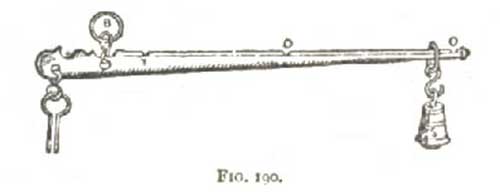Capacity and Weight Measurements in Ancient Ireland
From A Smaller Social History of Ancient Ireland 1906
« previous page | contents | start of chapter | next page »
CHAPTER XXIII....continued
2. Capacity.
The standard unit of capacity adopted by the Irish was the full of a hen-eggshell of moderate size, which perhaps was as good a standard as could be found at the time. Beginning with this there is a regular table of measures of capacity. Twelve eggshellfuls made a méisrin [messhereen], which contained about as much as our present pint.
3. Weight.
The smallest weight used was a grain of the best wheat. The following is the table of weight founded on the average grain of wheat:—
| 8 grains, | 1 pinginn or penny of silver. |
| 3 pinginns, | 1 screpall. |
| 24 screpalls, | 1 unga or ounce. |
The unga or ounce (576 grains of wheat or about 432 grains Troy) was the standard used in weighing metals. The word seems to have been borrowed from the Latin uncia: but there was an older native word, mann, for the ounce.
From numerous references in the old writings, we learn that the ancient Irish had balances of different kinds and sizes, and with different names. The most usual Irish term for a balance in general, and also for the beam of a balance, was meadh [ma], which is the word in use at the present day. A puincern [punkern: meaning 'notched beam'] was a sort of steelyard, i.e. a balance having a single weight movable along a graduated beam from notch to notch, which by its distance from the suspension point indicated the weight of the commodity—identical with our modern steelyard.
FIG. 190. Ancient Irish Steelyard. (From Kilkenny Archaeological Journal).
As bearing upon this point, it is well to observe that an old steelyard of bronze was found in 1864 in a rath near Ballyshannon in Donegal, ornamented and carefully graduated: the material—bronze—indicating great antiquity. But the Irish had also a two-dish balance like those in use at the present day, of which bronze specimens have been found in the earth.

